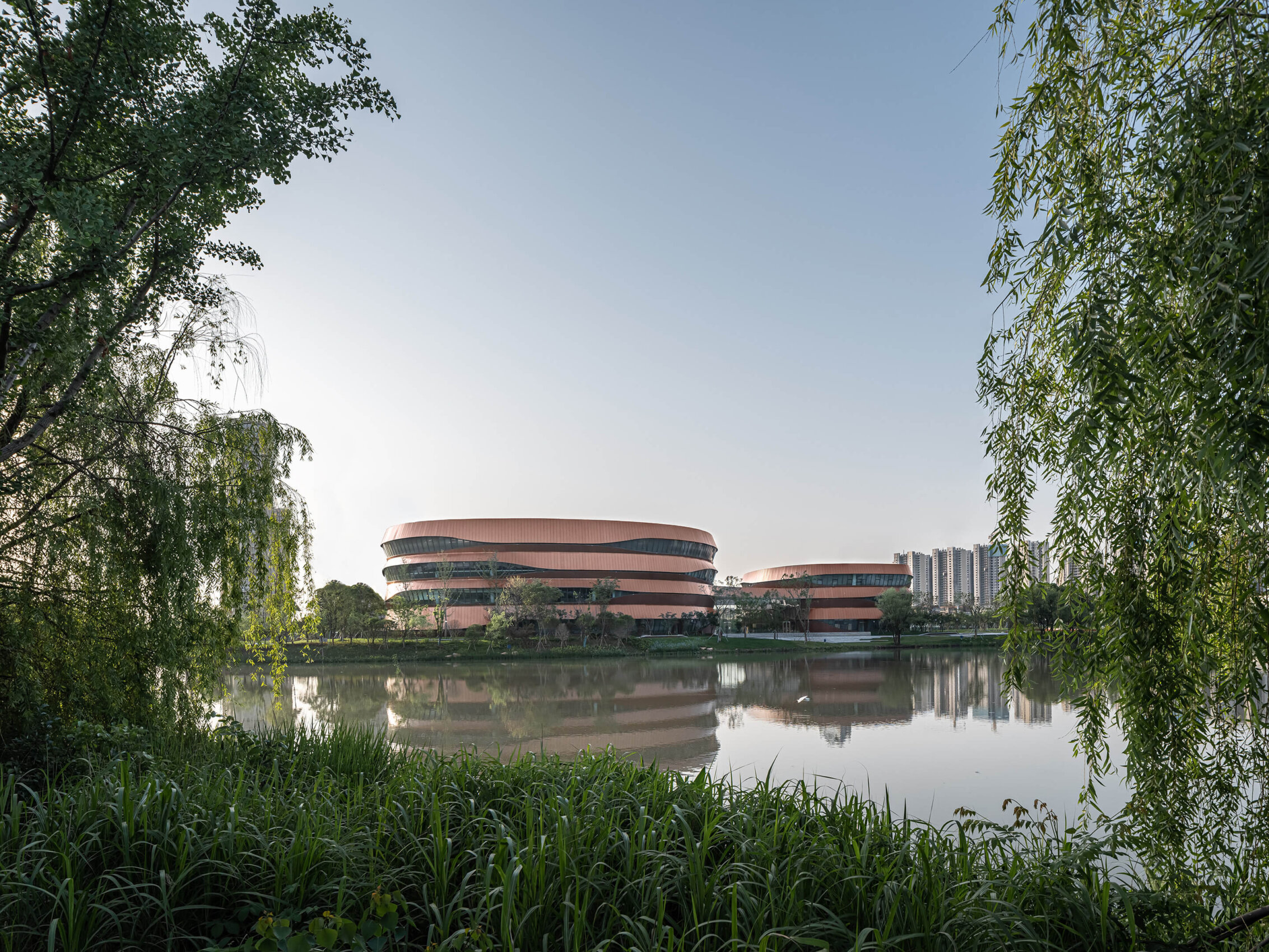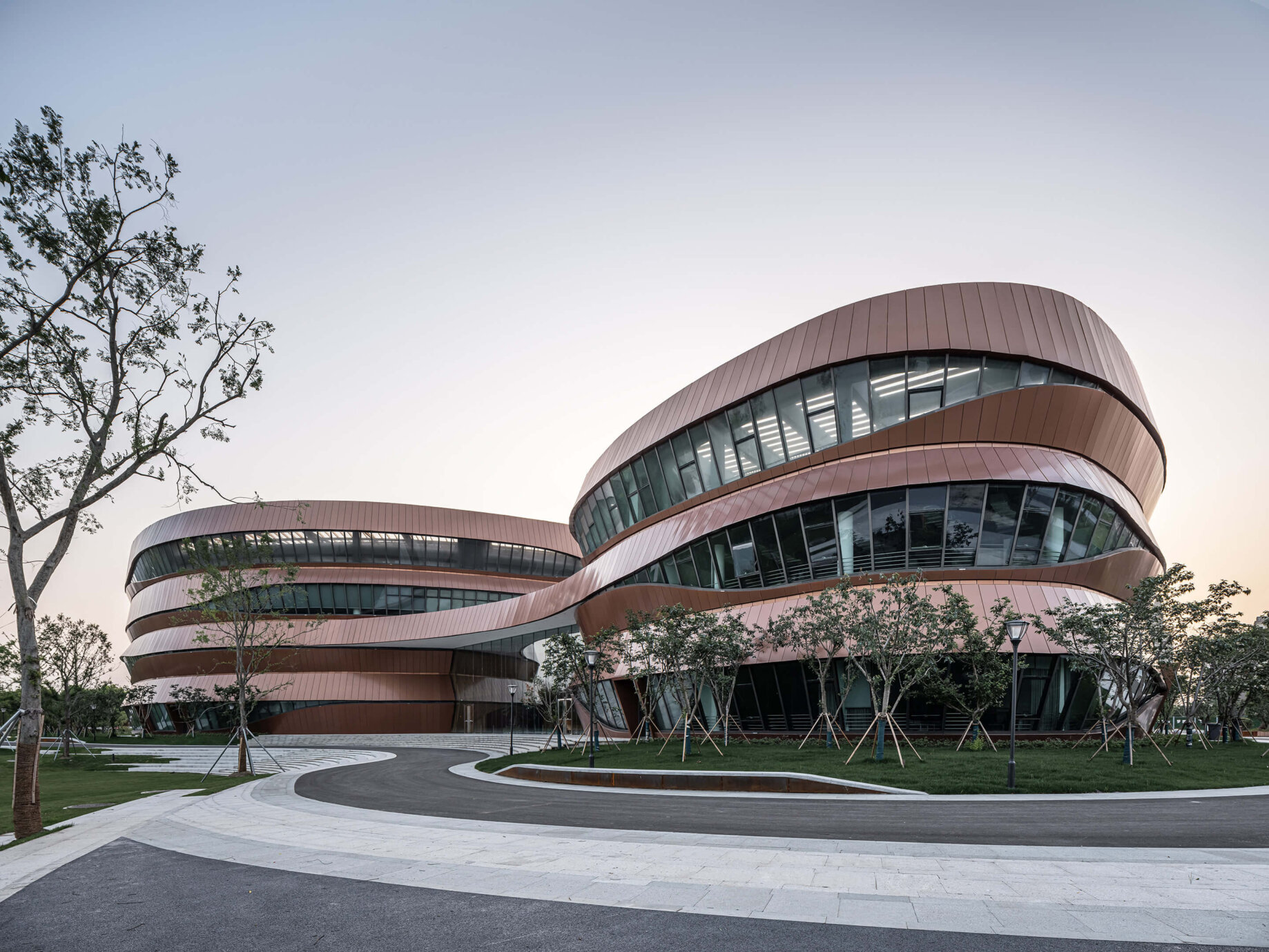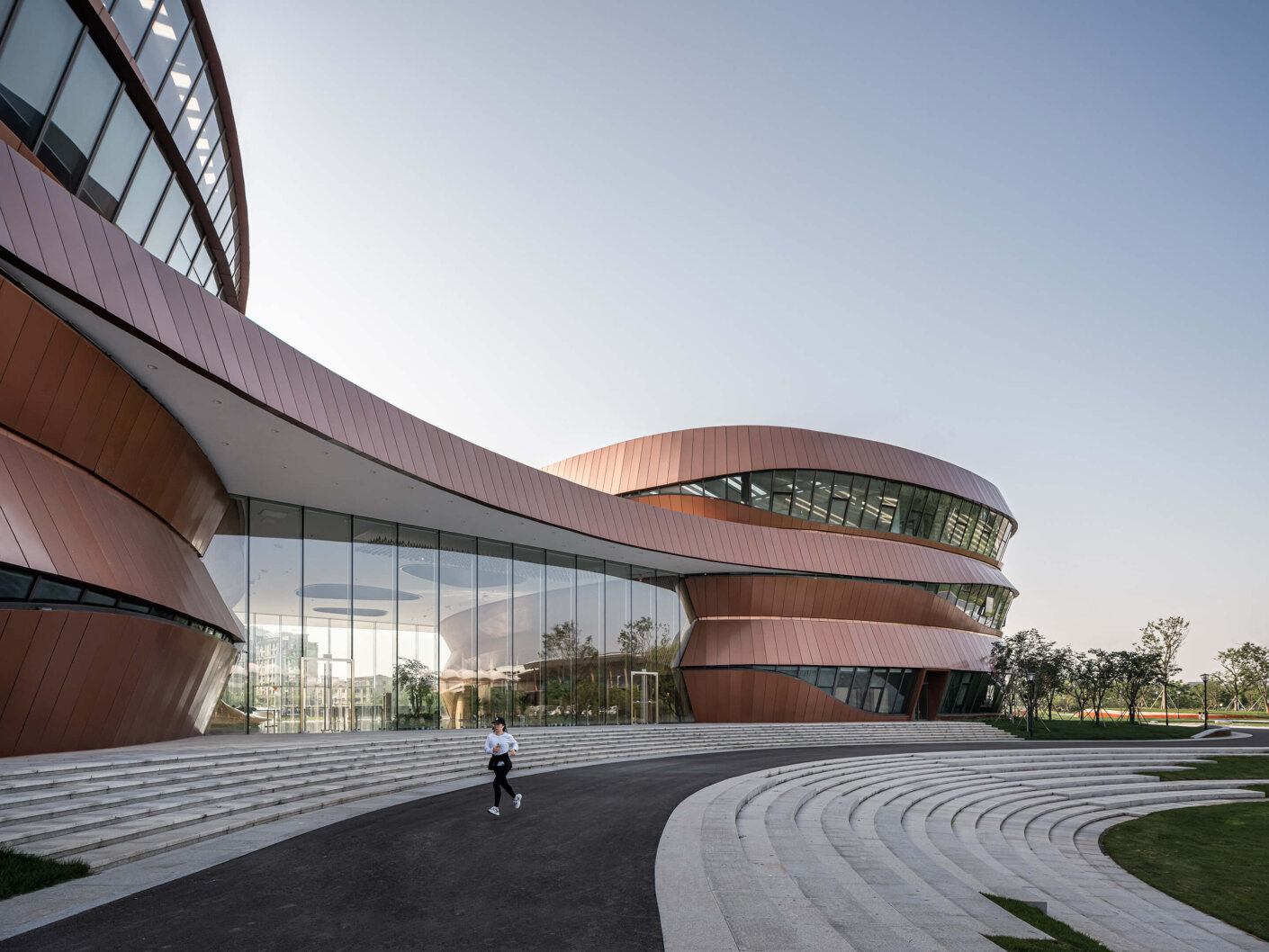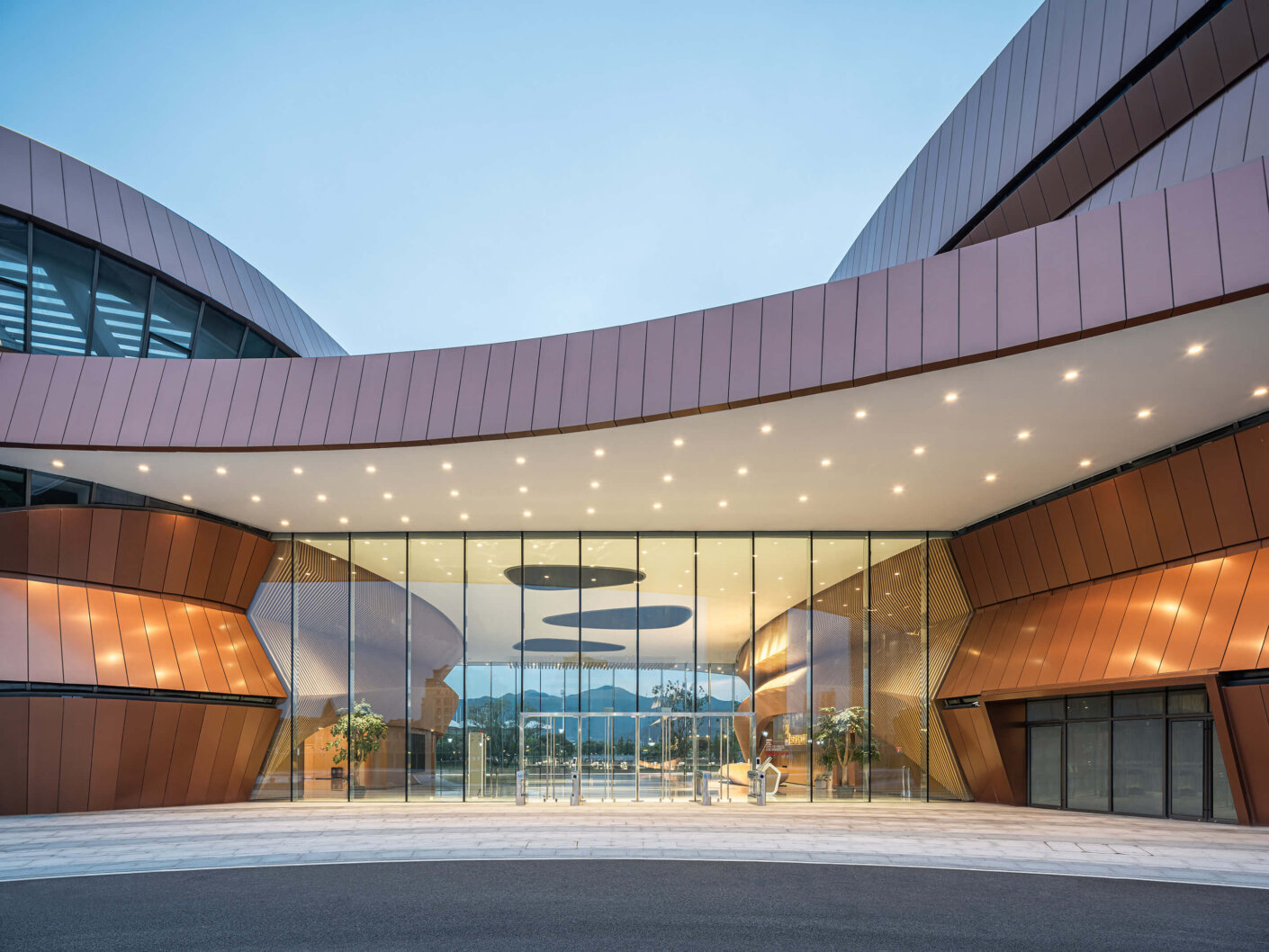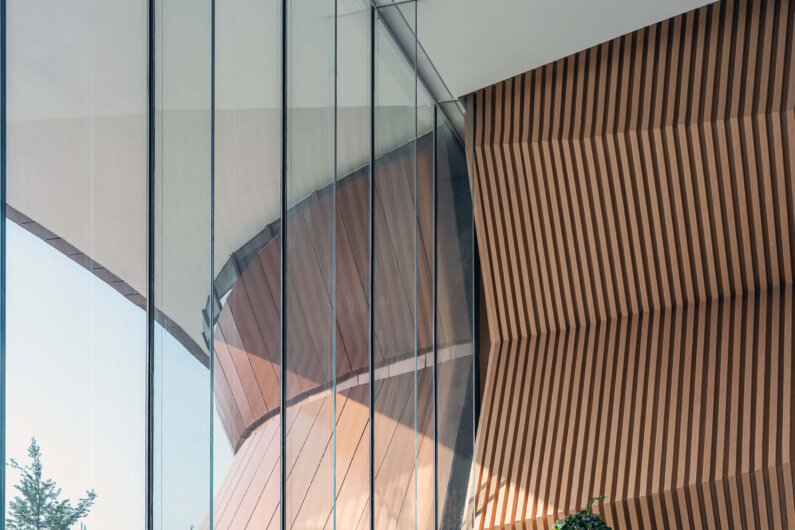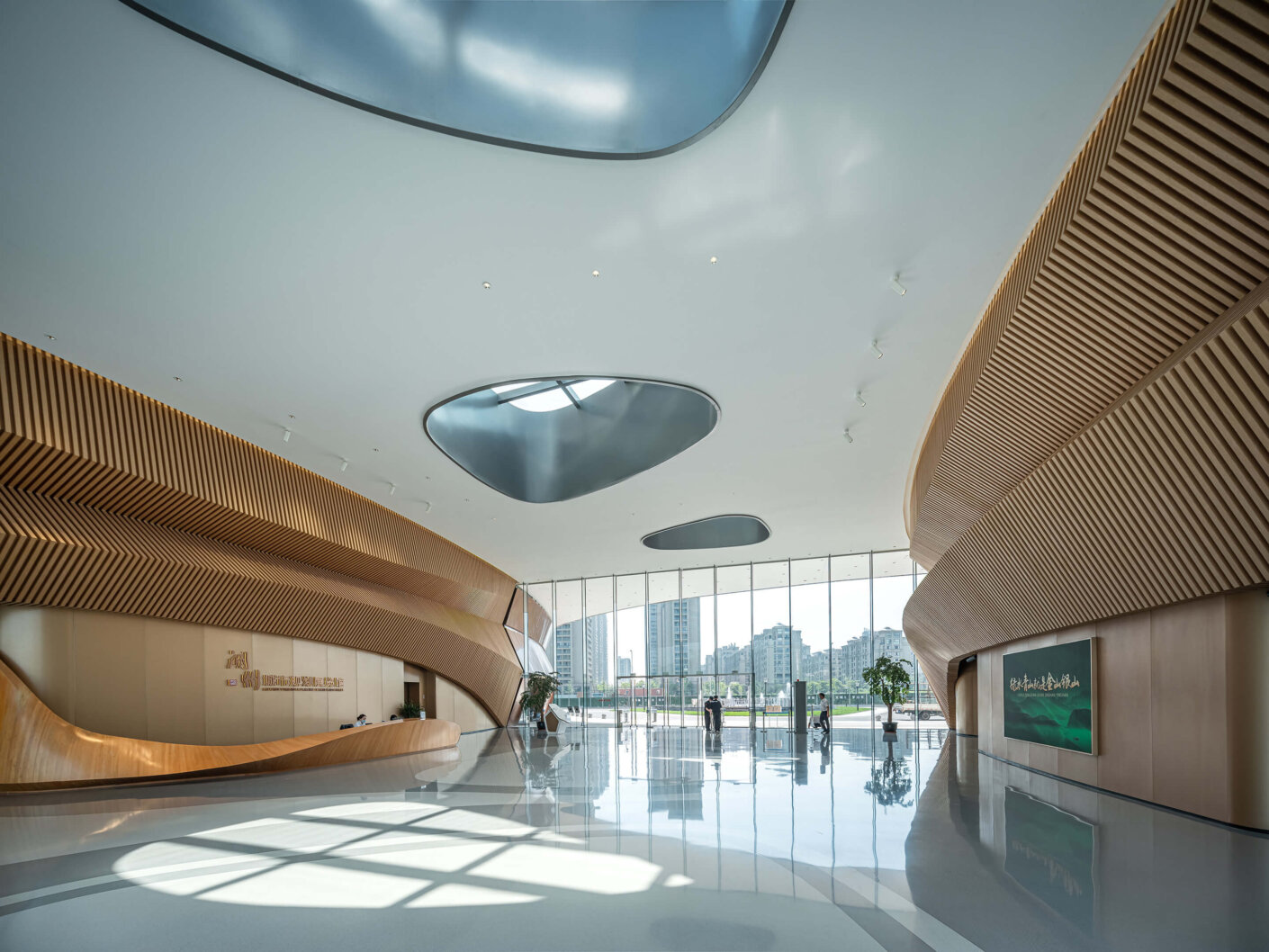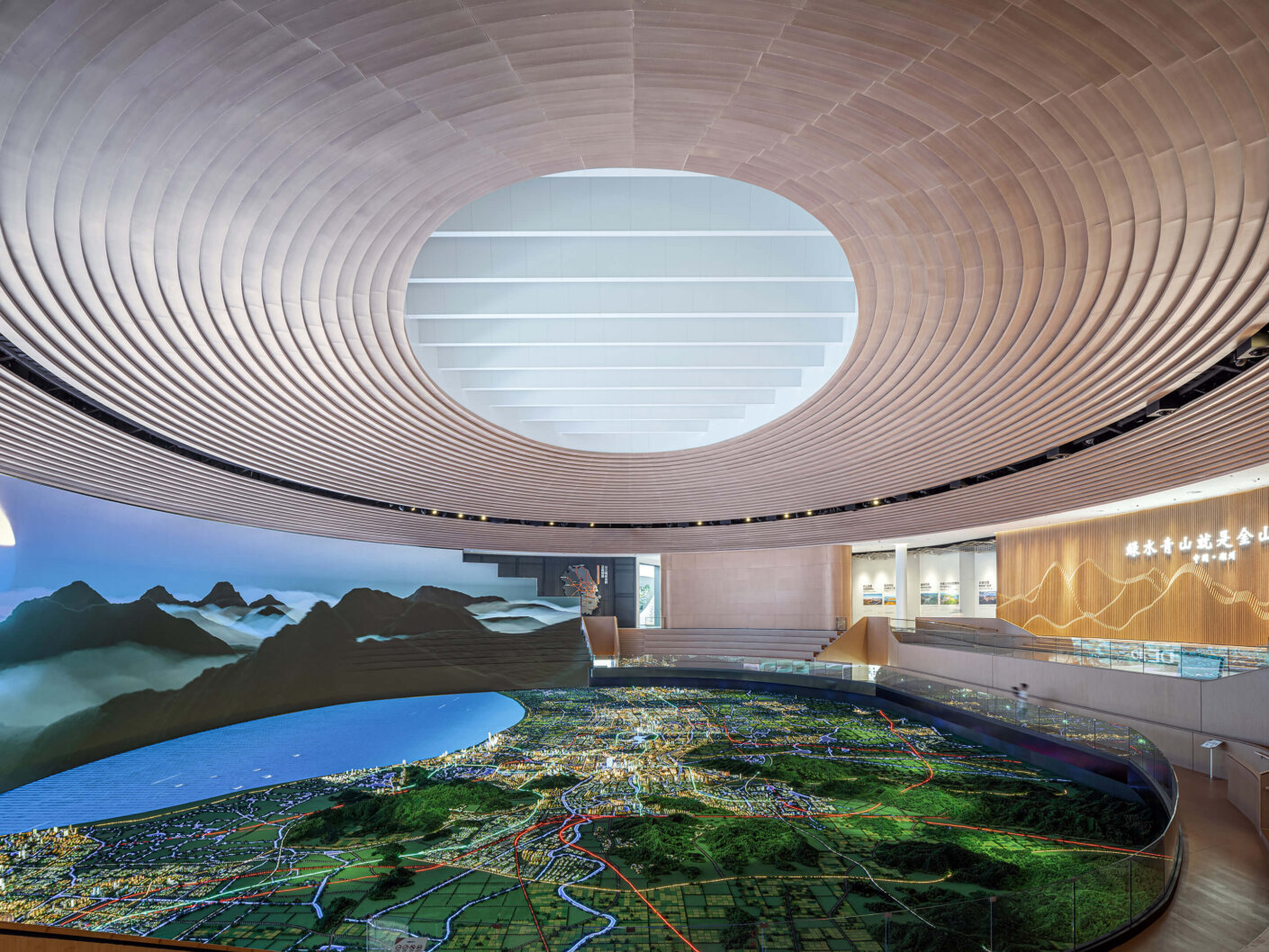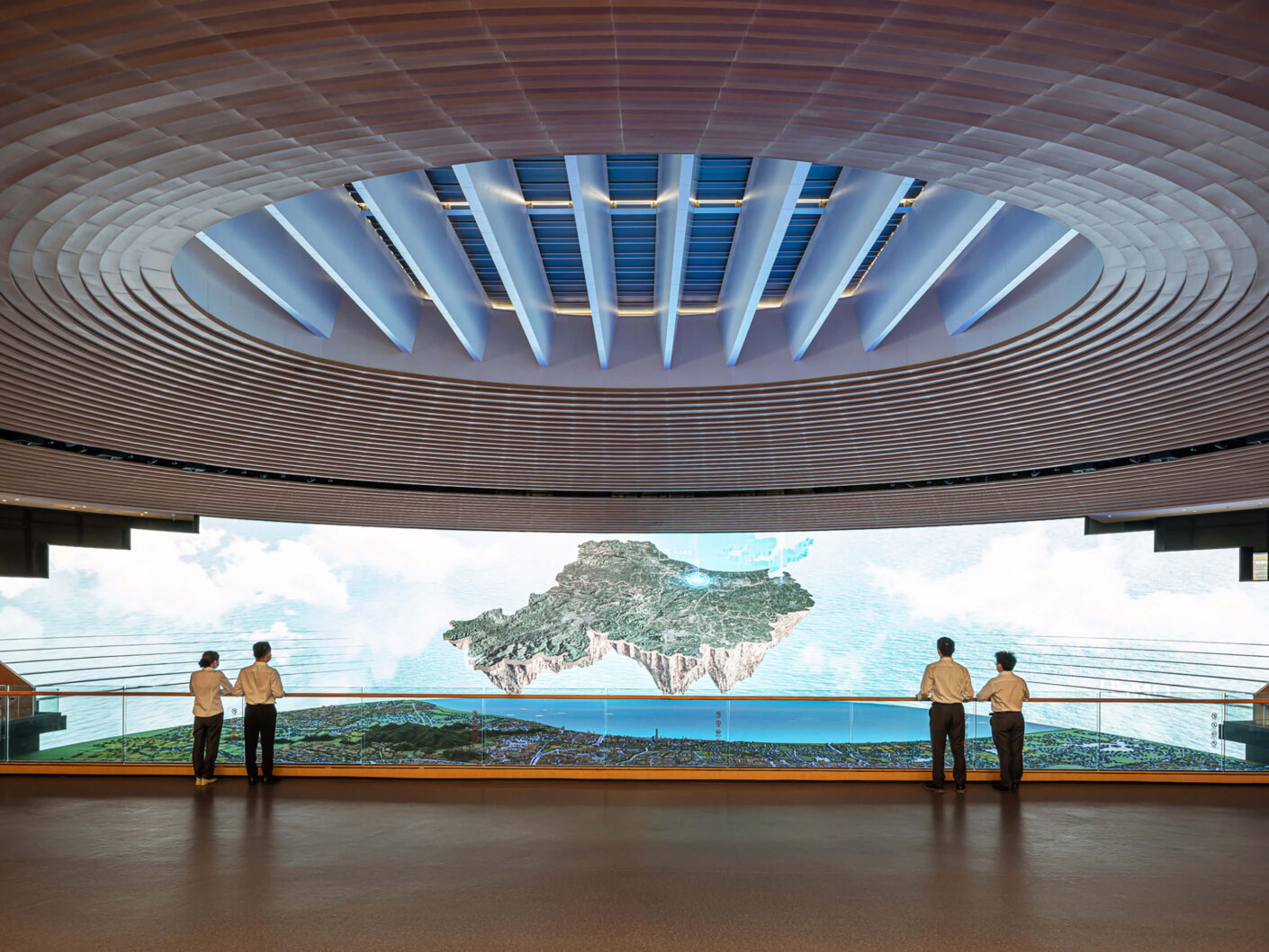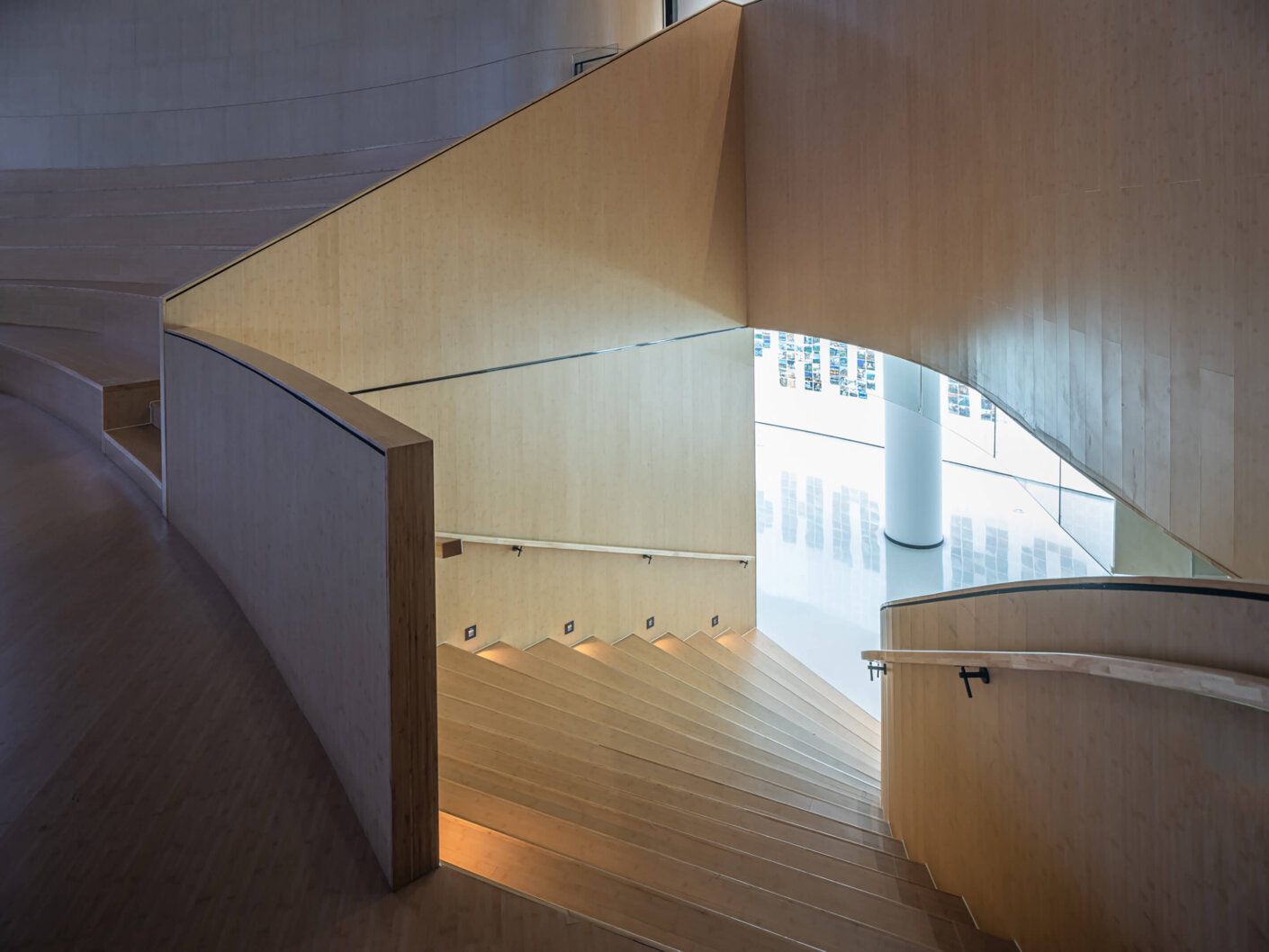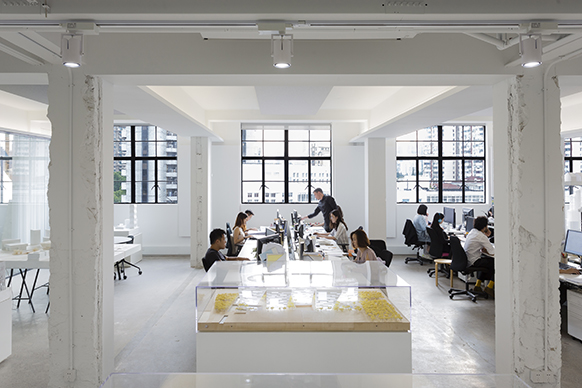A Gem on the Historical Silk Route
Situated on the southern banks of Tai Lake with city of Shanghai to the east, the historic city of Huzhou is well-known as one of the birthplaces of silk cultivation. Around 60 years ago, a number of silk artifacts were discovered on the outskirts of Huzhou, dating back to 4,000 years ago. Today, the silk and textile industries still play an important role in Huzhou’s overall economic development.
As the only city in the region to reference Tai Lake in its name, Huzhou led our team to envision an urban planning exhibition museum for the city inspired by the fluidity of water and the texture of silk. The building houses a collection of exhibition halls, offices, a conference center and educational classrooms. The nature park and lake surrounding the museum attracts nearby residents, creating an active cultural and community gathering place.
Located between the CBD and the Tai Lake Holiday Resort Area, the project is a key component of Huzhou’s Olympic Sports Center and Wetlands Park. Set within a lush green landscape with a view to the scenic mountains nearby, the museum is a prominent cultural landmark within the area.
The original siting and orientation strategy focused on enhancing the picturesque waterfront and mountain views to the northwest. The museum’s form and positioning takes advantages of the natural attributes of the site while offering an iconic gesture to the city’s history and culture.
